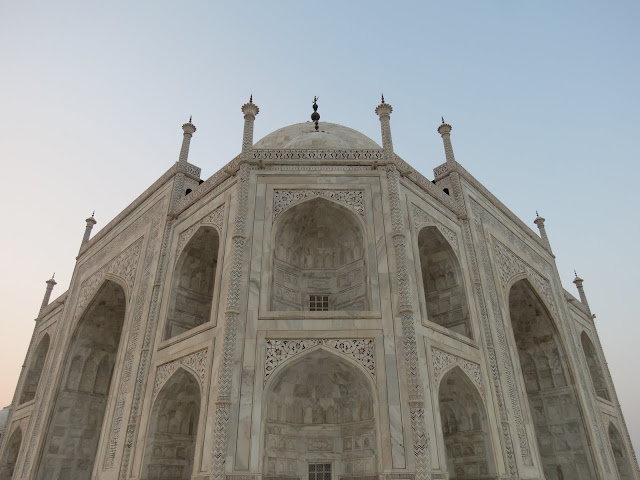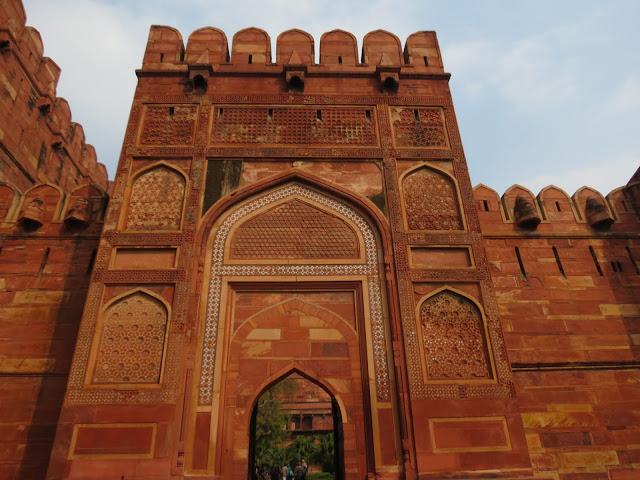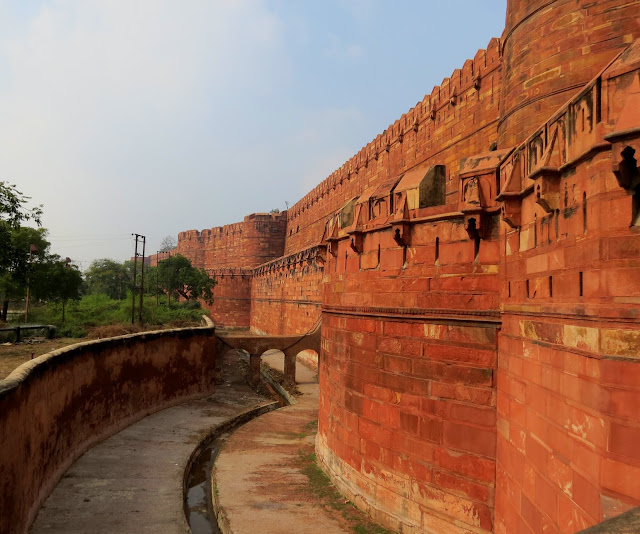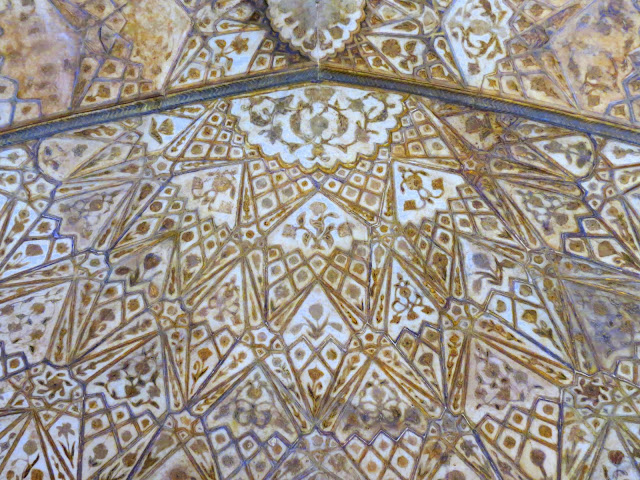Last month an opportunity to revisit Agra came my way! Once the capital of the Mughal empire of India, Agra today is a tourist magnet owing to the many majestic Mughal monuments it houses. My trip was brief, and we only managed to cover the Taj Mahal, Agra Fort, Fatehpur Sikri, and Itimad-ud-Daulah (the first three happen to be UNESCO World Heritage Sites). The Taj Mahal, a marble mausoleum built by emperor Shah Jahan for his wife Mumtaz Mahal, stands on the banks of the Yamuna river. The Agra Fort, with its august red sandstone facade, intricate layout, and lavish interiors was built over many hundreds of years by multiple monarchs, both Mughal and non-Mughal. The tomb of Itimad-ud-Daulah, built by Nur Jahan, wife of Mughal emperor Jahangir, for her parents, like the Taj Mahal, also stands on the bank of the Yamuna. Fatehpur Sikri happens to be a city under the district of Agra. The Mughal capital shifted from the city of Agra to Fatehpur Sikri during the reign of Akbar, who built this city in honor of the Sufi saint Salim Chishti after the saint's blessing supposedly gave the king his first male heir! Without further ado, the photo tour commences:
 |
The Taj Mahal, a white marble mausoleum built by emperor Shah Jahan for his wife Mumtaz Mahal, stands on the banks of the Yamuna river. Shah Jahan was quite a fan of white marble and it was brought all the way from the state of Rajasthan. Today the monument is struggling in the throes of pollution which has severely compromised the condition of the marble.
|
 |
| The main gateway leading to the Taj Mahal |
 |
| The monument from a different angle |
 |
| The flock heads home at dusk! |
 |
| View of the gateway from the Taj Mahal |
 |
| Gateway to the tomb of Itimad-ud-Daulah, a mausoleum commissioned by Nur Jahan, wife of Mughal emperor Jahangir, for her parents. |
 |
| The main mausoleum building at Itimad-ud-Daulah |
 |
| What remains of the fine artwork embellished with semi-precious stones |
 |
| Like the Taj Mahal, this tomb too stands on the bank of the Yamuna. |
 |
| Entrance to the Agra Fort. The outer facade is made of red sandstone. |
 |
| The Amar Singh Gate, also known as the Lahore Gate |
 |
| A moat full of hungry crocodiles surrounded the fort. The entrance was secured by a drawbridge. An added layer of security was provided by a dry moat with lions and tigers! |
 |
| Inside the fort: Ornamental brackets adorn the Jahangiri Mahal building |
 |
| Jahangiri Mahal interiors |
 |
| The "jaali" or perforated stone screen is a specialty of the Agra monuments. Here's a view of the red fort walls through a white marble jaali. |
 |
| The walls and ceiling of this chamber were colorful and gilded once. Today the remnants of the gold shimmer. |
 |
| Semiprecious stones inlaid on marble. This stone inlay work is characteristic of Agra. |
 |
| Inside Musamman Burj, a marble building where emperor Shah Jahan and and his wife Mumtaz Mahal spent happy times together. |
 |
| Fatehpur Sikri draped in the morning mist. The Mughal capital shifted from the city of Agra to Fatehpur Sikri during the reign of Akbar, who built this city in honor of the Sufi saint Salim Chishti after the saint's blessing supposedly gave the king his first male heir! |
 |
| Inside the Diwan-i-Khas, where emperor Akbar held meetings with his ministers and received dignitaries. The emperor would be seated in the center (aloft) and the ministers on four sides. Stylishly inconvenient? |
 |
| Intricate carvings on the walls |
 |
| Vestiges of a mural with Chinese cherry blossoms! Rather unexpected! |
 |
| A multitude of jaali patterns |
 |
| Buland Darwaza, 54 m high gateway to Fatehpur Sikri |
 |
| The tomb of Salim Chishti. Legend has it the Akbar owed his first male heir to the blessings of the Sufi saint. Today multitudes of Indians tie threads onto the marble jaalis here in the hope of having their wishes fulfilled. |
 |
| Local handicrafts on sale |
 |
| Honeycombs dangle from the ceiling of the Buland Darwaza. |
No comments:
Post a Comment